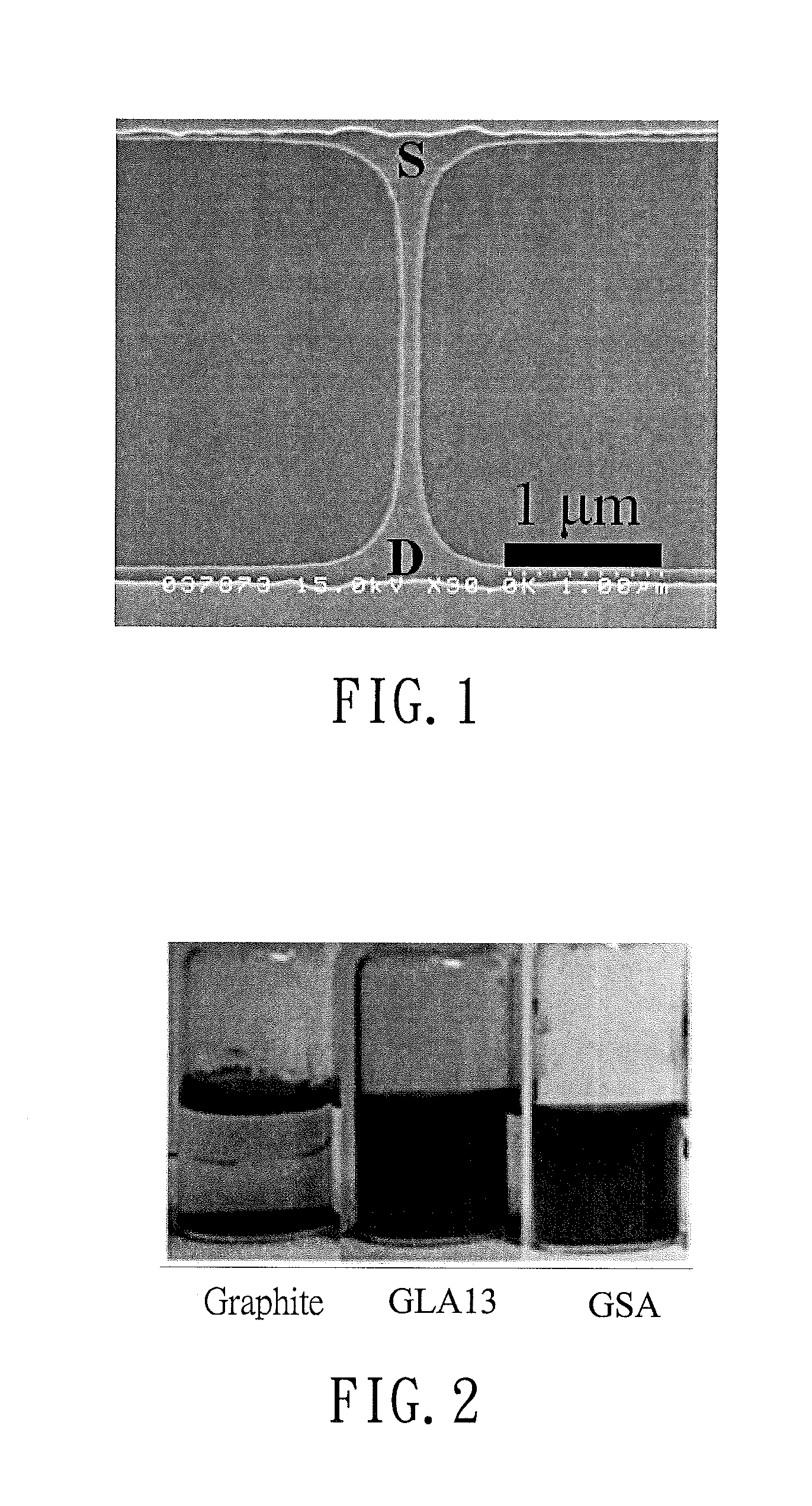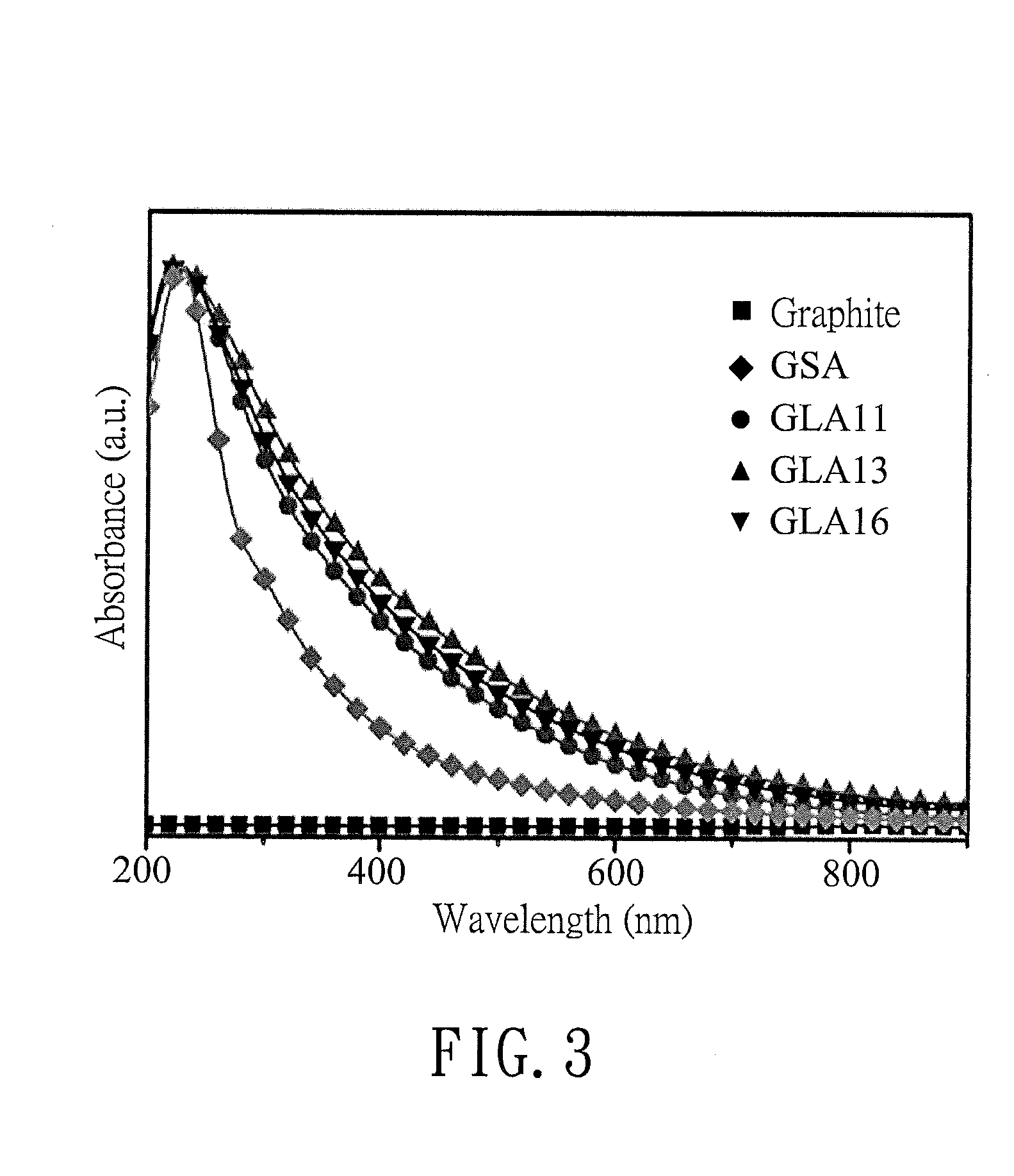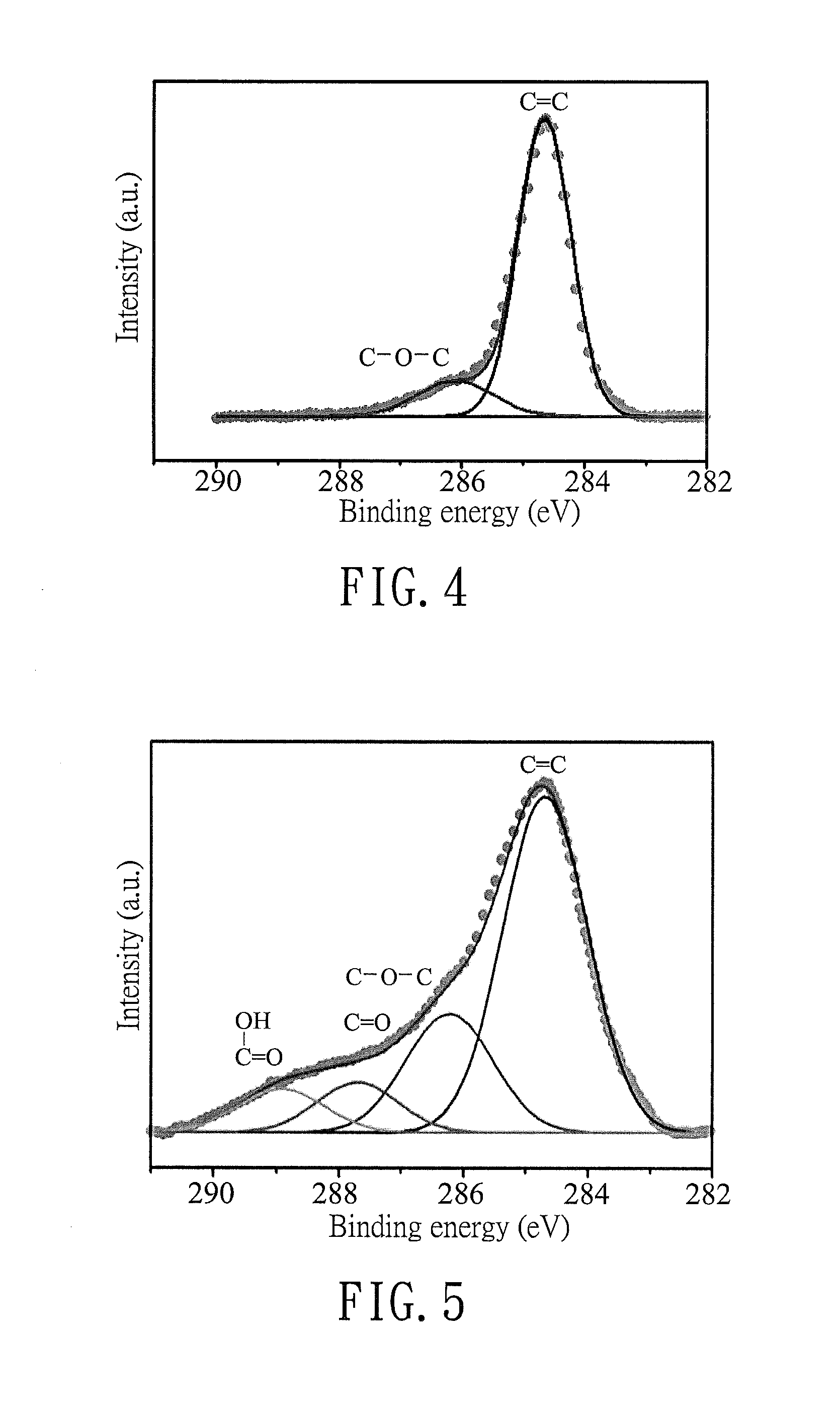Reduced graphene oxide-based biosensor and use thereof
a biosensor and graphene oxide technology, applied in the field of biosensors, can solve the problems of difficult to directly use graphene sheets in fet-based biosensors, low amount and bioactivity of biosensor receptors thus produced, etc., and achieves the effects of increasing the chain length, increasing the carbon number, and increasing the freedom
- Summary
- Abstract
- Description
- Claims
- Application Information
AI Technical Summary
Benefits of technology
Problems solved by technology
Method used
Image
Examples
examples
Sources of Chemicals
[0068]
ChemicalsSourcesGraphite:Alfa AesarMaleic anhydride (MA):TCl(sulfo-NHS)Flukaphosphate buffered saline (PBS):SigmaEDC:Sigmabovine serum albumin (BSA):SigmaMES buffer solution (pH = 6.3):SigmaAcetone:TediaMethanol:TediaN-methyl-2-pyrrolidone (NMP):TediaAluminum chloride (AlCl3):Acrostoluidine blue O (TBO):AcrosSodium hydroxide (NaOH):MerckFerrous chloride (FeCl2):MerckFerric chloride (FeCl3):Merckanti-APOA2 antibody:Abcam, CB, UKAPOA2 protein:Abcam, CB, UKAPTES:SigmaGA:SigmaSodium nitrate:SigmaPotassium permanganate:SigmaHydrogen peroxide:ShowaHydrochloric acid:Tedia3,3′,5,5′-Tetramethylbenzidine (TMB):Sigma
preparation examples 1-3
Preparation of Reduced Graphene Oxide Having a Linking Moiety of —(C═O)—CH═CH—COOH (Referred to as GLA Hereinafter)
[0069]Each of GLA11, GLA13, and GLA16 of Preparation Examples 1-3 was prepared using AlCl3 and MA according to the following steps.
[0070]Step 1: Graphite (50 mg) was temporarily dispersed in anhydrous NMP (10 ml) with sonication to prepare a graphite solution.
[0071]Step 2: MA (1 g) was dispersed in anhydrous NMP (40 ml) under a nitrogen atmosphere, and AlCl3 was then added at a molar ratio shown in Table 1 below at 90° C., followed by stirring for 3 hours to prepare a reaction solution.
[0072]Step 3: The graphite solution prepared in step 1 was added to the reaction solution prepared in step 2, following by a reaction at 160° C. for 48 hours to prepare a coarse GLA solution.
[0073]Step 4: The coarse GLA solution obtained in step 3 was filtered through a 0.1-μm poly(vinylidene fluoride) (PVDE) membrane and washed with methanol and deionized (DI) water three times to obtain...
preparation example 4
Preparation of a Composite (Referred to as MGLA)
[0074]Step 1: GLA13 (200 mg) obtained in Preparation Example 2 was dispersed in DI water (20 ml), followed by focused ultra-sonication at 4° C. for 24 hours to obtain an aqueous GLA13 solution.
[0075]Step 2: FeCl3 (4.32 mmol) and FeCl2. 4H2O (6.48 mmol) were dissolved in DI water (380 ml) at 27° C. to obtain an iron-containing solution.
[0076]Step 3: The aqueous GLA13 solution obtained in step 1 and the iron-containing solution obtained in step 2 were mixed under a nitrogen atmosphere to obtain a mixed solution. After heating the mixed solution slowly to 50° C., a NaOH solution (30 ml, 0.576 N) was slowly added over 20 minutes, resulting in a final temperature of 80° C. The reaction was then rapidly quenched on ice, and a HCl solution (0.1 N) was slowly added until a neutral pH was reached, thereby obtaining a coarse MGLA solution.
[0077]Step 4: Coarse MGLA was separated from the coarse MGLA solution obtained in step 3 via application of ...
PUM
| Property | Measurement | Unit |
|---|---|---|
| size | aaaaa | aaaaa |
| molar ratio | aaaaa | aaaaa |
| molar ratio | aaaaa | aaaaa |
Abstract
Description
Claims
Application Information
 Login to View More
Login to View More - R&D
- Intellectual Property
- Life Sciences
- Materials
- Tech Scout
- Unparalleled Data Quality
- Higher Quality Content
- 60% Fewer Hallucinations
Browse by: Latest US Patents, China's latest patents, Technical Efficacy Thesaurus, Application Domain, Technology Topic, Popular Technical Reports.
© 2025 PatSnap. All rights reserved.Legal|Privacy policy|Modern Slavery Act Transparency Statement|Sitemap|About US| Contact US: help@patsnap.com



